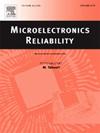卫星运载火箭航空电子系统中 BGA 器件的振动诱发疲劳寿命评估新方法
IF 1.6
4区 工程技术
Q3 ENGINEERING, ELECTRICAL & ELECTRONIC
引用次数: 0
摘要
在系统级振动分析过程中,建立了一种新的基于 PCB 应变的 BGA 疲劳损坏评估方法。从同行评议数据中通过 FE 建模提取的焊点(Sn37Pb)应力-寿命曲线被用作损伤阈值,而不是传统使用的经验标准。为了消除与焊点应力计算相关的建模工作和资源密集型计算,建立了印刷电路板应变与器件焊点应力之间的相关性。为此,对具有 3 种不同尺寸、2 种边界条件和不同器件位置的印刷电路板进行了谐振分析。此外,还提出了一种不会影响 PCB 应变结果的新型器件和 PCB 模型简化技术。在随机振动环境下,对运载火箭航空电子设备封装中的 BGA 器件进行疲劳寿命评估时,演示了该方法。随后,还提出了满足疲劳寿命要求的设计改进建议。疲劳寿命的计算采用了三种不同的应力循环估算模型,即 Dirlik 法、单动量法和 Steinberg 的 3 波段法,其中单动量法最为合适。本文章由计算机程序翻译,如有差异,请以英文原文为准。
A novel methodology for vibration induced fatigue life assessment of BGA devices in avionics systems of satellite launch vehicles
A new PCB strain-based methodology for BGA fatigue damage assessment, during system level vibration analysis, is established. The Stress-Life curve for solder joints (Sn37Pb), extracted by FE modelling from peer-reviewed data, is utilized as the damage thresholds instead of traditionally used empirical criteria. To eliminate the modelling effort and resource intensive computations associated with solder joint stress calculations, a correlation between the PCB strain and device solder joint stress is established. Harmonic vibration analysis of PCBs with 3 different sizes, 2 boundary conditions, and different device locations are utilized for this purpose. A novel device and PCB model simplification technique, which does not affect PCB strain results, is also proposed. The methodology is demonstrated for fatigue life assessment of BGA device in a launch vehicle avionics package, under random vibration environment. Subsequently, design improvement to meet the fatigue life requirement is also suggested. Fatigue life is calculated using three different stress cycles estimation models namely Dirlik, Single Moment, and Steinberg's 3-band method, and Single Moment method is found to be most appropriate.
求助全文
通过发布文献求助,成功后即可免费获取论文全文。
去求助
来源期刊

Microelectronics Reliability
工程技术-工程:电子与电气
CiteScore
3.30
自引率
12.50%
发文量
342
审稿时长
68 days
期刊介绍:
Microelectronics Reliability, is dedicated to disseminating the latest research results and related information on the reliability of microelectronic devices, circuits and systems, from materials, process and manufacturing, to design, testing and operation. The coverage of the journal includes the following topics: measurement, understanding and analysis; evaluation and prediction; modelling and simulation; methodologies and mitigation. Papers which combine reliability with other important areas of microelectronics engineering, such as design, fabrication, integration, testing, and field operation will also be welcome, and practical papers reporting case studies in the field and specific application domains are particularly encouraged.
Most accepted papers will be published as Research Papers, describing significant advances and completed work. Papers reviewing important developing topics of general interest may be accepted for publication as Review Papers. Urgent communications of a more preliminary nature and short reports on completed practical work of current interest may be considered for publication as Research Notes. All contributions are subject to peer review by leading experts in the field.
 求助内容:
求助内容: 应助结果提醒方式:
应助结果提醒方式:


